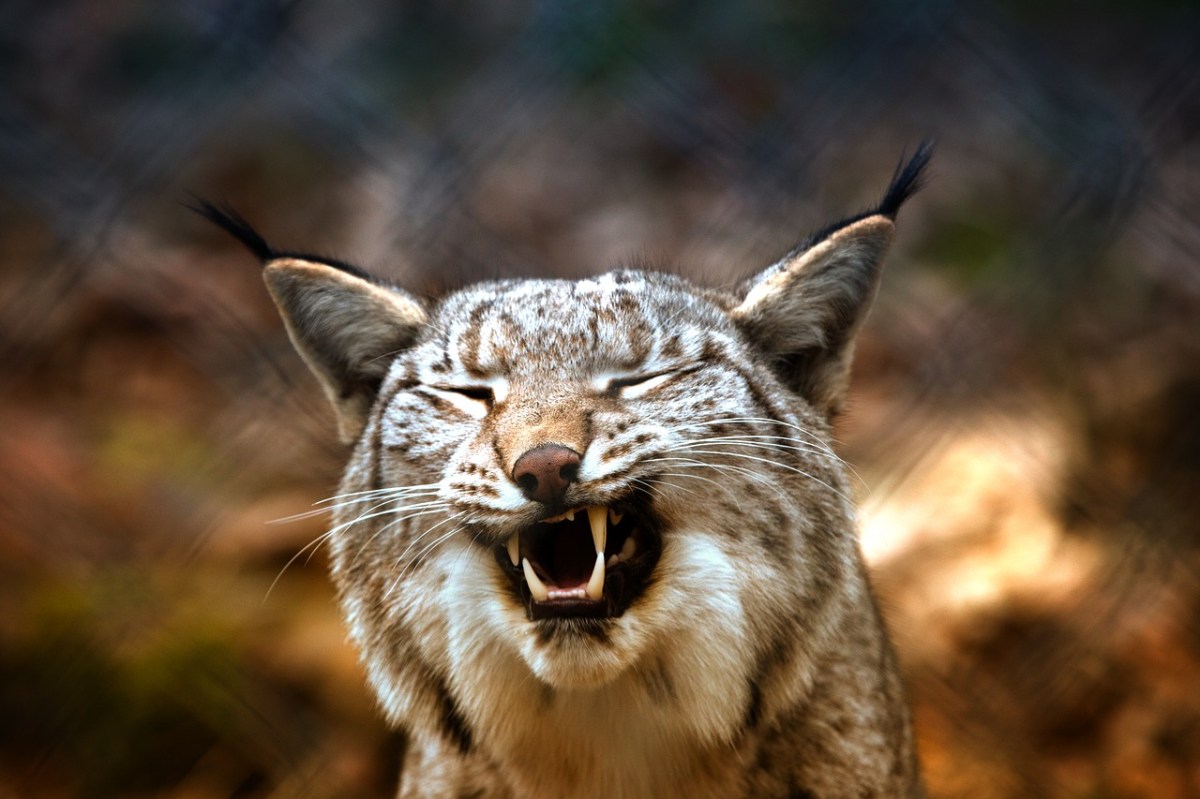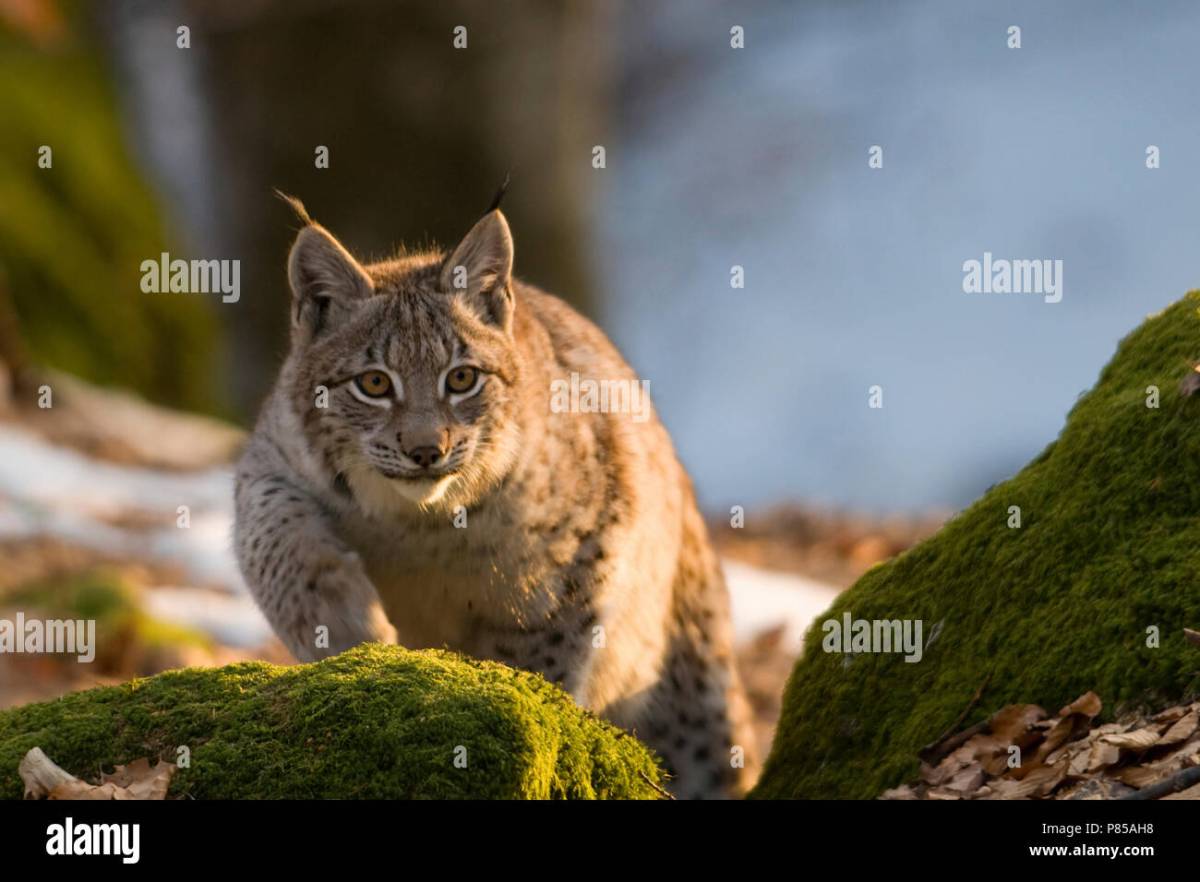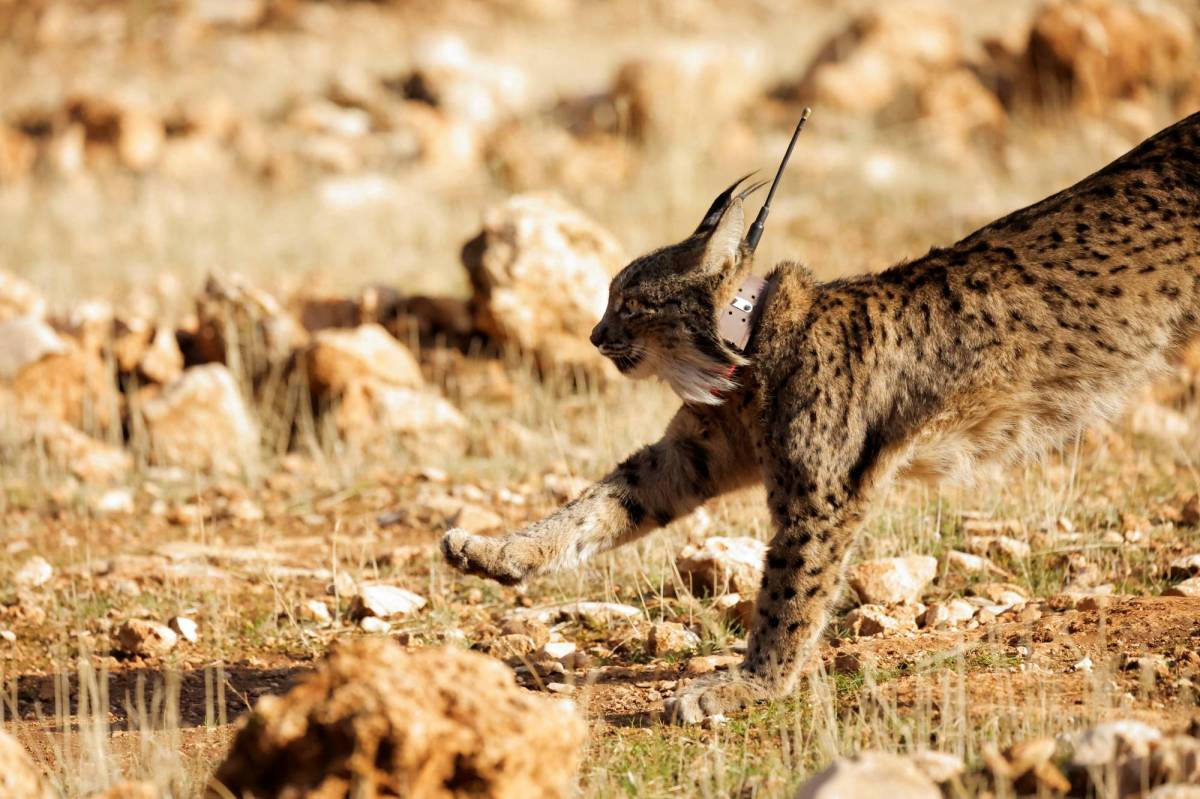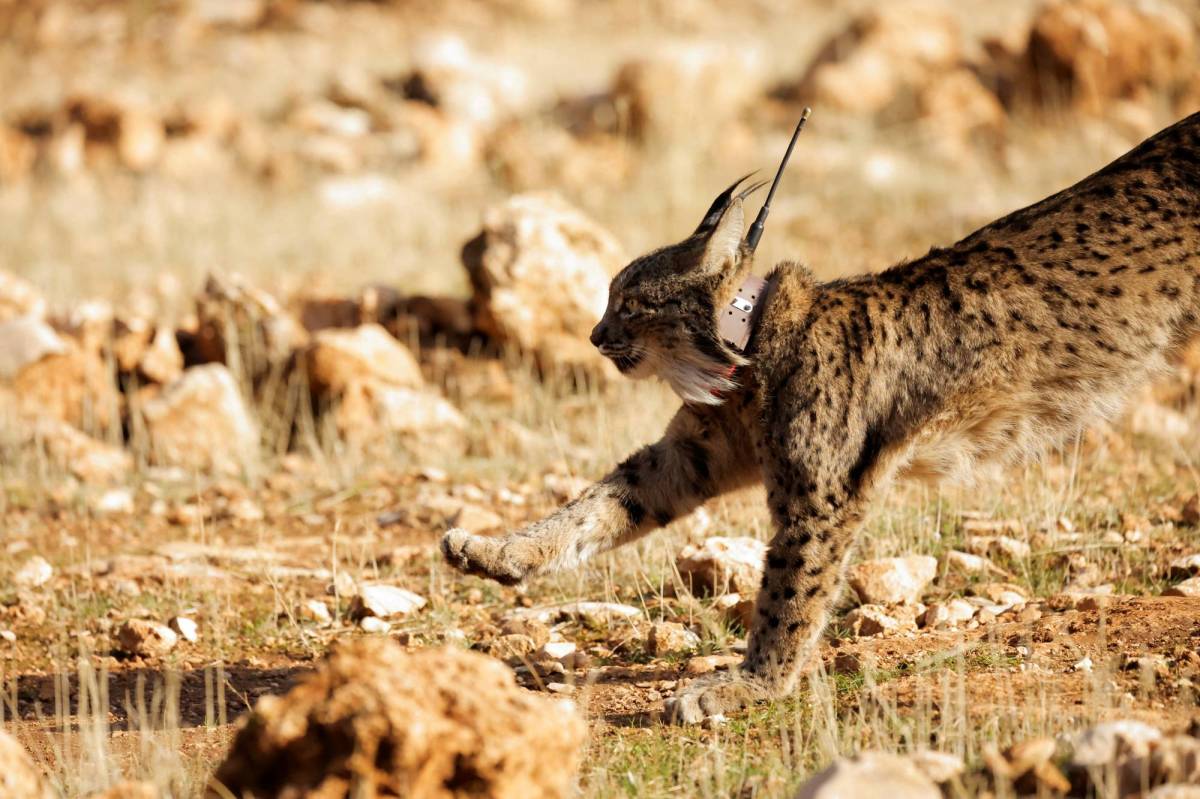Illegally released lynx captured – NatureScot statement – Illegally released lynx captured – NatureScot statement: This gripping story unfolds with the discovery of an illegally released lynx, swiftly captured by authorities. NatureScot’s official response details the events, from the initial illegal release to the lynx’s capture and subsequent veterinary care. We’ll explore the legal ramifications, public reaction, and the crucial conservation implications of this incident, highlighting the urgent need for preventative measures to protect Scotland’s vulnerable lynx population.
This detailed account covers the lynx’s physical and mental state following its ordeal, the legal processes underway to find those responsible, and the ongoing media coverage. We’ll examine NatureScot’s plans for the future management of the lynx and strategies to prevent similar events. Expect a deep dive into the ethical considerations, public perception, and the long-term impact on lynx conservation efforts in Scotland.
NatureScot’s Response to the Illegal Lynx Release
The illegal release of a lynx in Scotland prompted a swift and decisive response from NatureScot, the Scottish nature agency. Their actions highlight the seriousness of the situation and the complexities involved in managing such an event. This section details NatureScot’s official statement, their immediate actions, a timeline of events, and the key messages conveyed.
NatureScot’s Official Statement and Immediate Actions

NatureScot’s official statement condemned the illegal release, emphasizing the potential risks to both the lynx and the public. The statement Artikeld the agency’s commitment to ensuring the animal’s welfare and to investigating the incident thoroughly. Immediate actions included deploying a team to locate and capture the lynx, prioritizing its safety and minimizing any potential disruption to the surrounding environment.
Collaboration with local authorities and other relevant stakeholders was also a key part of the initial response.
Timeline of Events
The timeline of events surrounding the illegal lynx release and subsequent capture likely involved several key stages: initial reports of a sighting, the mobilization of NatureScot’s response team, the tracking and eventual capture of the lynx, and the transfer to a suitable facility for assessment and care. Specific dates and times may vary depending on the information released publicly by NatureScot.
Key Messages and Intended Audience
NatureScot’s key messages focused on the illegality of the action, the importance of animal welfare, and the ongoing investigation. The intended audience included the general public, wildlife enthusiasts, conservationists, and potentially those involved in the illegal release itself, serving as a warning and a commitment to accountability.
So, the illegally released lynx were captured – a NatureScot statement confirmed it. It’s a bit of a wild story, almost as unpredictable as that Tottenham 1-0 upset against Liverpool; check out the game analysis here: Tottenham 1-0 Liverpool (Jan 8, 2025) Game Analysis – ESPN. Anyway, back to the lynx – hopefully, this situation will be resolved quickly and safely.
The Lynx’s Condition and Welfare
The welfare of the captured lynx was paramount in NatureScot’s response. Veterinary assessments were crucial in determining the animal’s physical and mental state following its illegal release and subsequent capture. This section details the lynx’s condition, veterinary care, and potential long-term effects.
The Lynx’s Physical and Mental State and Veterinary Care

Upon capture, the lynx underwent a thorough veterinary examination to assess its physical and mental health. Veterinary care likely included treatments for any injuries sustained during the period it was at large, along with measures to manage stress and ensure proper nutrition and hydration. Observations were made to determine its overall fitness and any signs of disease.
Potential Long-Term Effects
The illegal release could have long-term consequences for the lynx’s health and well-being. Stress from being in an unfamiliar environment, potential exposure to diseases or hazards, and the physical demands of survival in the wild could have cumulative negative impacts. Long-term monitoring will be necessary to fully assess the extent of these effects.
Lynx Vital Signs and Treatment Plan
| Date | Body Temperature (°C) | Heart Rate (bpm) | Treatment |
|---|---|---|---|
| Example Date 1 | 38.5 | 120 | Hydration, observation |
| Example Date 2 | 38.0 | 110 | Continued observation, minor wound care |
| Example Date 3 | 37.8 | 90 | Stable condition |
Legal and Ethical Implications

The illegal release of the lynx raises significant legal and ethical questions. This section examines the relevant laws, potential penalties, comparisons with similar cases, and the ethical considerations surrounding the handling and relocation of the animal.
Relevant Laws and Potential Penalties, Illegally released lynx captured – NatureScot statement

The illegal release of the lynx likely violated several laws related to wildlife protection and conservation in Scotland. Penalties for such offenses could range from fines to imprisonment, depending on the severity of the violation and the circumstances of the case. Specific legislation and potential penalties will need to be determined by legal authorities.
Comparison with Similar Cases
Similar cases of illegal wildlife releases have occurred elsewhere, often involving endangered or protected species. Analysis of these cases can provide valuable insights into the legal ramifications and the effectiveness of existing regulations. Comparisons can highlight best practices for prevention and response to such incidents.
Ethical Considerations
Ethical considerations include the potential risks to the lynx’s welfare, the impact on the environment and existing ecosystems, and the public safety implications. The decision-making process surrounding the lynx’s handling and potential relocation involves balancing these competing ethical concerns.
So, the illegally released lynx were captured – NatureScot’s statement was pretty firm on that. It’s a reminder that even seemingly exciting wildlife releases need careful planning. Speaking of unexpected shifts, check out this article: Who will win the NBA’s post-LeBron/Steph audition? (Hint: It’s over – it’s a wild ride, just like trying to predict the impact of those released lynx.
Back to the lynx though, the whole situation highlights the importance of responsible conservation efforts.
Public Perception and Media Coverage: Illegally Released Lynx Captured – NatureScot Statement
The illegal release of the lynx generated significant media attention and public discussion. This section summarizes public reaction, media coverage, and the influence of media portrayal on public opinion.
Public Reaction and Media Outlets
Public reaction to the news varied, with some expressing outrage at the illegal action, others expressing concern for the lynx’s welfare, and some questioning the effectiveness of conservation efforts. The incident was widely reported across various media outlets, both national and international.
- BBC News
- The Scotsman
- The Guardian
- Other relevant news sources
Media Portrayal and Public Opinion
The media’s portrayal of the event significantly influenced public opinion. The tone and focus of reporting—whether emphasizing the illegality of the act, the animal’s welfare, or the broader conservation implications—shaped public perceptions and subsequent discussions.
Communication Strategy for Future Events
A proactive communication strategy for managing public perception in future similar events should emphasize transparency, factual information, and clear messaging regarding the legal and ethical considerations involved. Collaboration with media outlets to ensure accurate and responsible reporting is also crucial.
Conservation Implications and Future Actions
The incident highlights the challenges involved in lynx conservation and the need for robust preventative measures. This section explores the potential impact on conservation efforts, NatureScot’s future plans, and recommendations for preventing future incidents.
Impact on Lynx Conservation Efforts
The illegal release could potentially undermine ongoing lynx conservation efforts in Scotland. It raises questions about the security of existing populations and the potential for future unauthorized releases. This incident underscores the need for improved security measures and public awareness campaigns.
NatureScot’s Future Management Plans
NatureScot’s future management plans for the captured lynx likely involve determining the most appropriate long-term care and potentially assessing its suitability for reintroduction into a suitable habitat, if deemed safe and appropriate. The agency will also be evaluating the incident to identify lessons learned and implement improvements.
Recommendations for Preventing Similar Incidents
Preventing future incidents requires a multi-faceted approach. This could involve strengthening legislation, improving security measures at facilities housing lynx, and increasing public awareness of the legal and ethical implications of unauthorized wildlife releases.
Preventative Measures to Protect Lynx Populations
- Enhanced security measures at lynx facilities.
- Increased public awareness campaigns about the illegality and risks of unauthorized releases.
- Strengthening legislation to deter illegal activities.
- Collaboration with stakeholders to improve monitoring and surveillance.
Illustrative Depiction of the Event
A vivid description of the lynx capture scene allows for a better understanding of the situation. This section focuses on the environment, the animal’s behavior, and any visible signs of stress or injury.
Scene of the Capture
Imagine a remote area of Scotland, perhaps a sparsely wooded hillside or a moorland. The weather conditions could have ranged from mild and overcast to harsh and windy, depending on the time of year. The capture itself might have involved a team of trained professionals using specialized equipment, while maintaining a safe distance to minimize stress on the animal.
So, the illegally released lynx were captured – a big NatureScot statement, right? It’s a whole different vibe from the news about a completely unrelated event, like this totally awesome New Exhibit Celebrates Elvis’ 90th Birthday. Anyway, back to the lynx – hopefully, this incident highlights the importance of responsible wildlife management.
The presence of human intervention would have been noticeable, but hopefully minimal in terms of disruption to the natural surroundings.
Appearance and Behavior of the Lynx
The lynx itself would likely appear wary and potentially stressed, exhibiting signs such as flattened ears, dilated pupils, and perhaps even defensive postures. Any visible injuries would be noted and documented, providing valuable information for its veterinary care. Its coat might be matted or dirty from its time in the wild. The overall demeanor would be indicative of the animal’s level of stress and need for immediate care.
Closing Summary
The illegal release of the lynx serves as a stark reminder of the challenges faced in wildlife conservation. NatureScot’s swift action highlights the importance of collaborative efforts to protect endangered species. The incident underscores the need for stronger preventative measures, increased public awareness, and robust legal frameworks to deter future illegal releases and ensure the long-term survival of Scotland’s lynx population.
The ongoing investigation and the lynx’s recovery offer a chance to learn and improve conservation strategies for the future.
Question Bank
What type of lynx was illegally released?
The specific subspecies of lynx isn’t always immediately released in initial statements. More information might emerge as the investigation progresses.
Where exactly was the lynx captured?
Precise location details are often withheld to protect the animal and prevent further disturbances. NatureScot will likely release more general information once appropriate.
What are the potential penalties for those responsible?
Penalties can vary depending on the specific laws broken, but could include substantial fines and imprisonment.
What is NatureScot’s long-term plan for this lynx?
NatureScot’s plan will likely involve assessing the lynx’s health and determining the best course of action for its long-term welfare, potentially including relocation to a suitable habitat.
